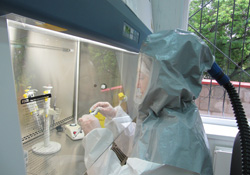Chemical safety

WHO
The range of chemicals affecting human health is broad and growing. Figures on chemical production and consumption in the WHO European Region are the highest in the world: 11 of the top 30 chemical-producing countries are European, generating sales of €533 billion. These include hazardous chemicals, such as heavy metals and some persistent and non-persistent organic pollutants – for which toxicity to humans is well established – as well as emerging chemicals, all of which cause public health concerns.
Globally, 1.3 million lives and 43 million disability-adjusted life-years (DALYs) were lost in 2012 as a result of exposure to selected chemicals, the health effects of which are well known. In the European Region mercury pollution costs €5.1 billion per year, while a broader estimate of childhood medical and physiological conditions resulting from chemical hazards suggests that the costs are in the order of €71 billion per year. A recent analysis estimated the costs of the burden of disease attributable to endocrine-disrupting chemicals at €163 billion per year. Despite substantial progress in chemicals regulation, urgent actions are needed to protect children at early stages of development to improve population health throughout the life-course.
According to the classification performed by the International Agency for Research on Cancer, many chemicals are classified as human carcinogens with sufficient or limited evidence: 120 substances are carcinogenic for humans; a further 81 are probably and 299 are possibly carcinogenic for humans. Occupational carcinogens are estimated to cause between 2% and 8% of all cancers. Unintentional poisonings in 2010 were estimated to cause 58 000 deaths annually in the European Region, and the majority resulted from preventable chemical exposures.



